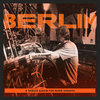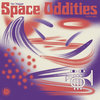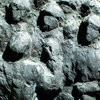Redshift by Redshift
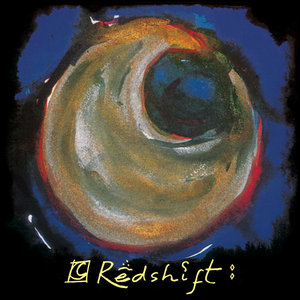
DS008: 1996
Redshift's eponymously titled first album was actually completed in mid 1994 but not physically released until 7th December 1996 at the band's first ever concert at the Jodrell Bank Planetarium in England.
Like the majority of Redshift's studio output it is actually a solo album recorded by Mark Shreeve. The style of music was deemed different enough from his previous solo work to create a separate vehicle to promote it. Hence Redshift.
The album was gently remastered in 2006 for another CD re-pressing mainly to deal with some of the original noise issues (originally it was recorded on 24 track tape) and the rather polite dynamics.
Another change was the creating of a new track identity at the end of the album. "Blueshift" now became "Blueshift" followed by "Blueshift Reprise" to deal with the "surprise" ending a little more neatly.
Most of the sounds on the album were created from older, analogue synthesisers although some modern digital keyboards and samplers were also used.
A contemporary review:
"I remember an incident when I was in the 6th form at school. I walked into the classroom just before the start of afternoon lessons and caught the very last note of some music being issued from a very low tech cassette recorder which was surrounded scrum-like by a number of my fellow classmates. "Tangerine Dream, Cyclone, the end of Madrigal Meridian I believe" I said in passing.
As they checked the cassette listing, a few of them then looked dumbfounded that on such a crumb of evidence I could identify the music with such accuracy. I myself don’t think there’s anything unusual about this feat, and I’m sure many of my fellow EM fans could do the same.
You see, back then it was the norm to pour over every note of an album, to listen to it so many times that every nuance was examined and scrutinised. The music was felt as well as heard. You grew up with it. It was one of the family. The cover notes and track listings were memorised by simple familiarity. Much of the music demanded this of the listener.
Answers on a postcard about what I’m going to say next. OK, I’ve digressed before I’ve started, but what I’m getting round to is that nowadays it’s rare I want to listen to an album so many times that it brings back such memories. Redshift’s debut album is very much an album in this category, and I haven’t even got the CD yet. I have nearly worn this cassette out, yet I still listen to it in wonderment and it comes across as strong and as fresh as the first time I heard it.
As you may have gathered, I am really "into" this style of music. It’s the style I grew up with. It’s the style which got me hooked on Electronic Music. And it’s a style which has stood the test of time so spectacularly that if anything my enthusiasm now is greater than it ever was.
So what am I talking about here? I am talking about two essential ingredients which, when mixed in the right proportions, can create music to die for. Vintage analogue gear such as the Moog Modular is one of them, the other is a band who know what they are doing and aren’t afraid to make music which they truly enjoy.
The main characteristics of Redshift’s music will come as no surprise to those familiar with my tastes. Synths that sound like synths, mellotron washes by the gallon, and sequences which grab you by the throat, kick you in the stomach, and send blow darts through the ears. There is no pretence here. No apologies are made. No guilt is felt. And God is it refreshing.
The opening title track at times sounds so close to ‘Rubycon’ that it could be. But why not? It’s among the greatest albums ever made in any sphere of music. The music emerges from a malaise of organic effects then introduces mellotron choirs and classic synths which you just know are going to be a precursor for depthcharge
sequences.
When the low synth drone starts it’s time to fasten your seat belts, and glue down the ornaments. The oscillators of the Moog groan into action as the filters try to get a handle on them. The sequencer marshals the sound into a mesmeric rhythm, and the mellotron returns to complete the picture. The sequence pattern hardly stays static for a moment. The way the whole sound is engulfed to end the section is a master stroke, and the rich chords which close the track are nigh on unsurpassable.
‘Spin’ is Redshift’s acknowledgement to the part which NODE have played in kick starting the resurgence in this style of EM. This has all the hallmarks of NODE’s extreme approach with over-driven oscillators and relentless sequencing. Impressive is an understatement, but don’t expose anyone of a frail disposition to it.
‘Shine’ packs a lot of variety into its relatively short time slot. At the heart is a powerful sequence which at times is fleshed out by symphonic textures, and at others simplistic effects. A gem of a piece.
The epic ‘Blueshift’ closes the album, and what a track this is. The magnificent opening gives way to weird, almost industrial, effects which in turn merge into the sequence run.
And when I say sequencing, I mean Sequencing with a capital S! I advise you to just sit back and immerse yourself in the awesome beauty and power of this piece. Hypnotic and narcotic, it really does explore the heights to which EM can reach. And as for the last section of the album, well I won’t say too much - just be prepared for a "surprise"!
To think that this is Redshift’s "starter for 10" almost beggars belief. It’s a completely awe inspiring example of power synthesis which is destined to catapult Redshift into the hearts and minds of Electronic Music fans world-wide. Take it from me, it’s that good." (GG)
Tracklist
| 1. | Redshift | 18:44 |
| 2. | Spin | 8:25 |
| 3. | Shine | 4:01 |
| 4. | Blueshift | 30:18 |
| 5. | Blueshift Reprise | 2:47 |
Credits
Composed, performed and produced by Mark Shreeve.
Cover artwork by Judith Wallace.
License
All rights reserved.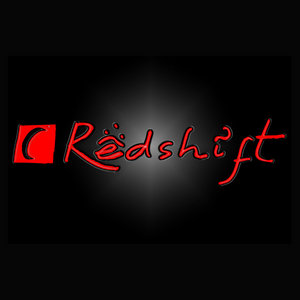
Redshift came into existence in 1994, initially as a solo project by Mark Shreeve. Shreeve had already established himself with his own more "structured" style of electronic music, along with pop songwriting, film score, TV and Library music output.
The idea behind Redshift was to create a darker, organic style of electronic music using mainly, though not exclusively, old analogue synthesisers.
